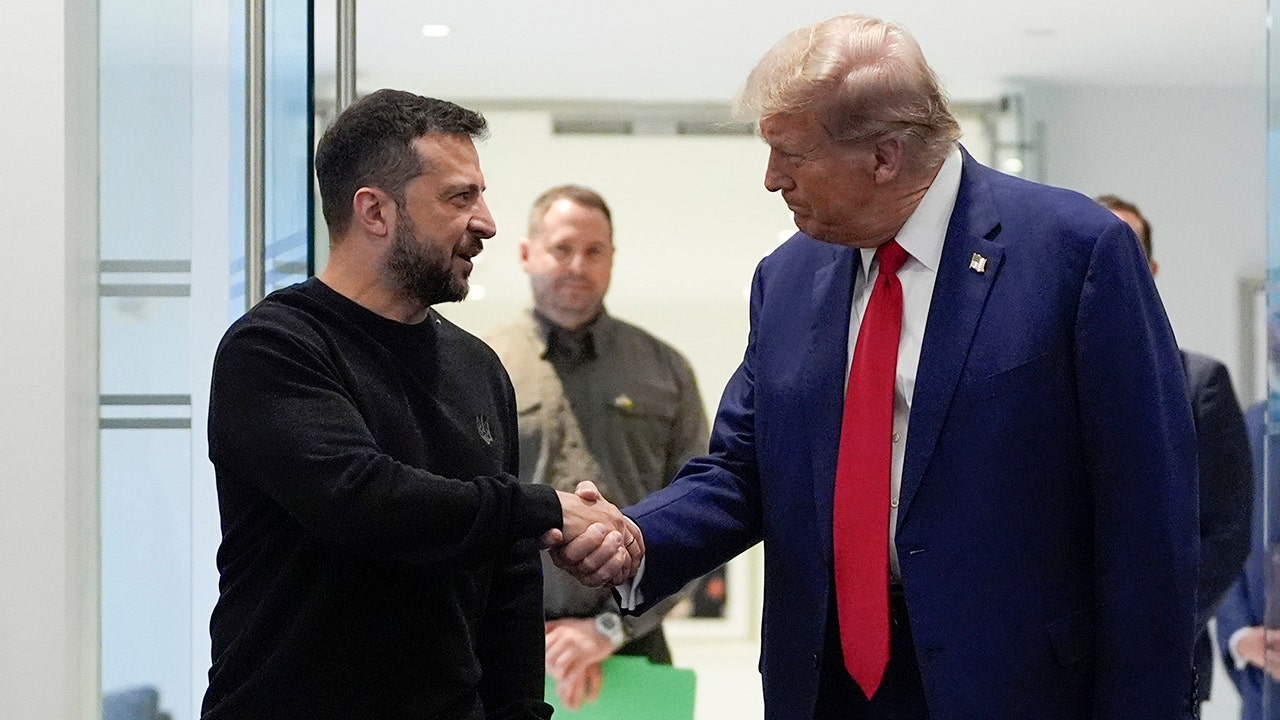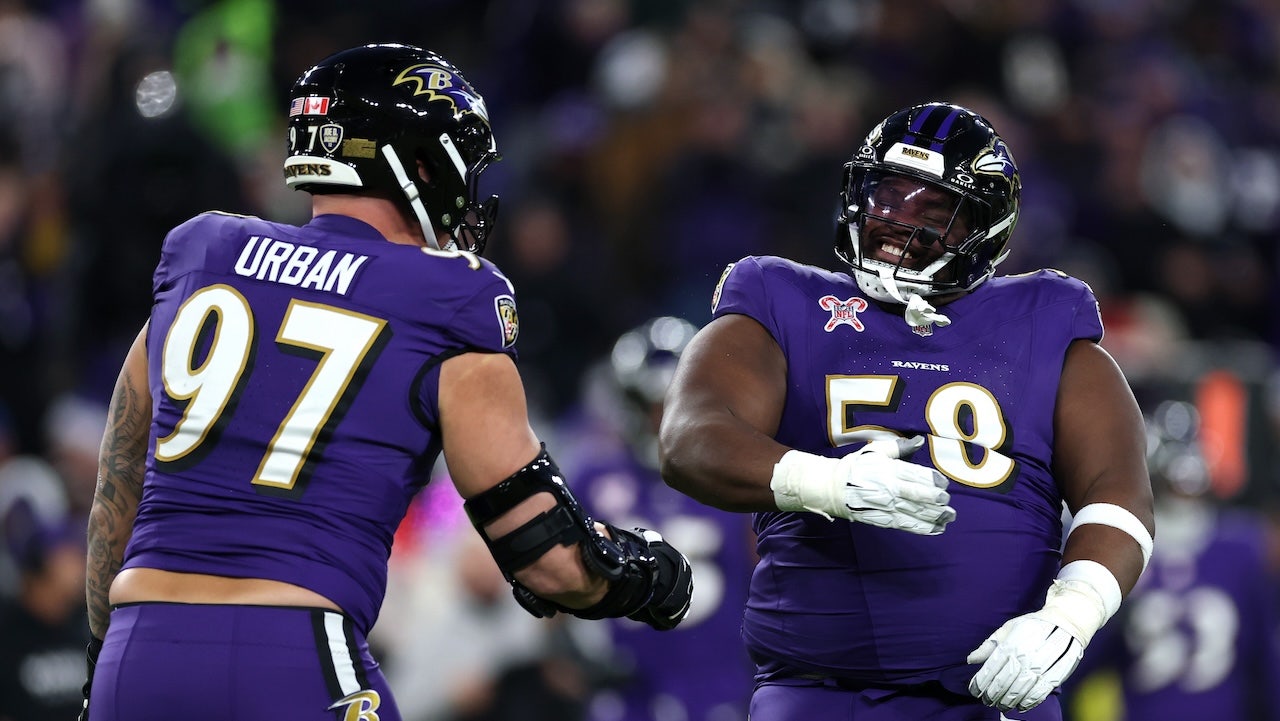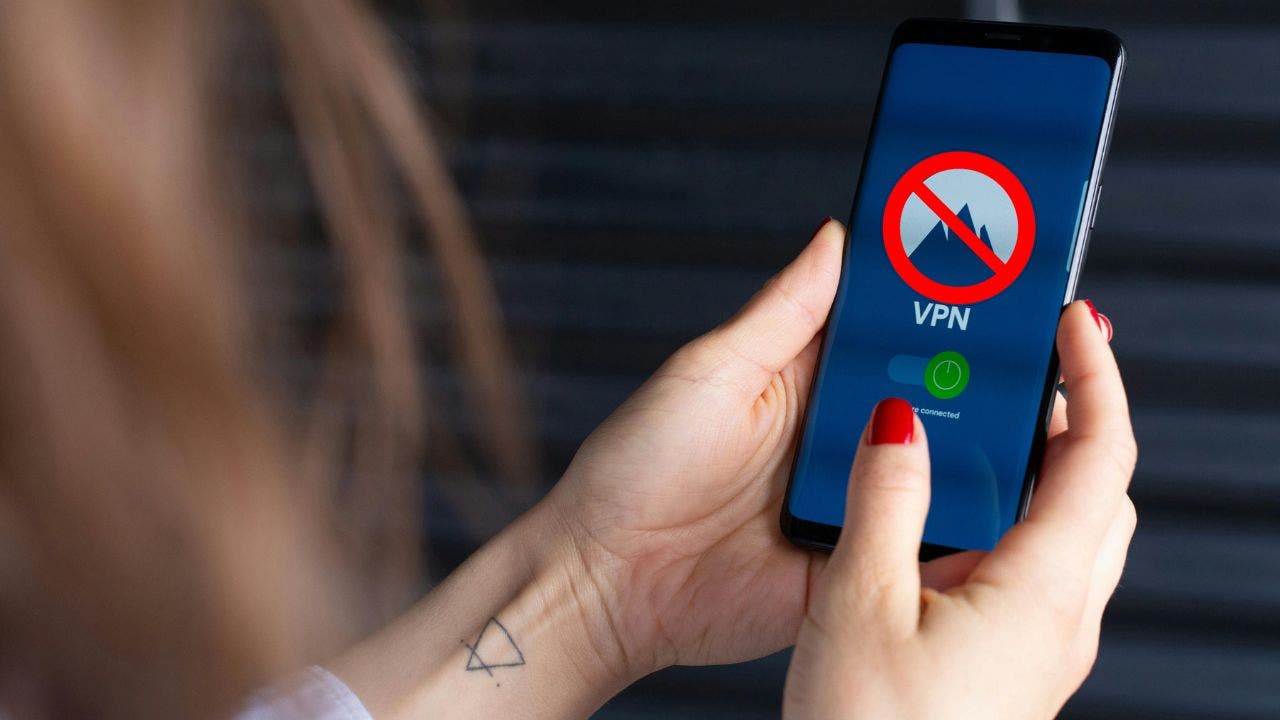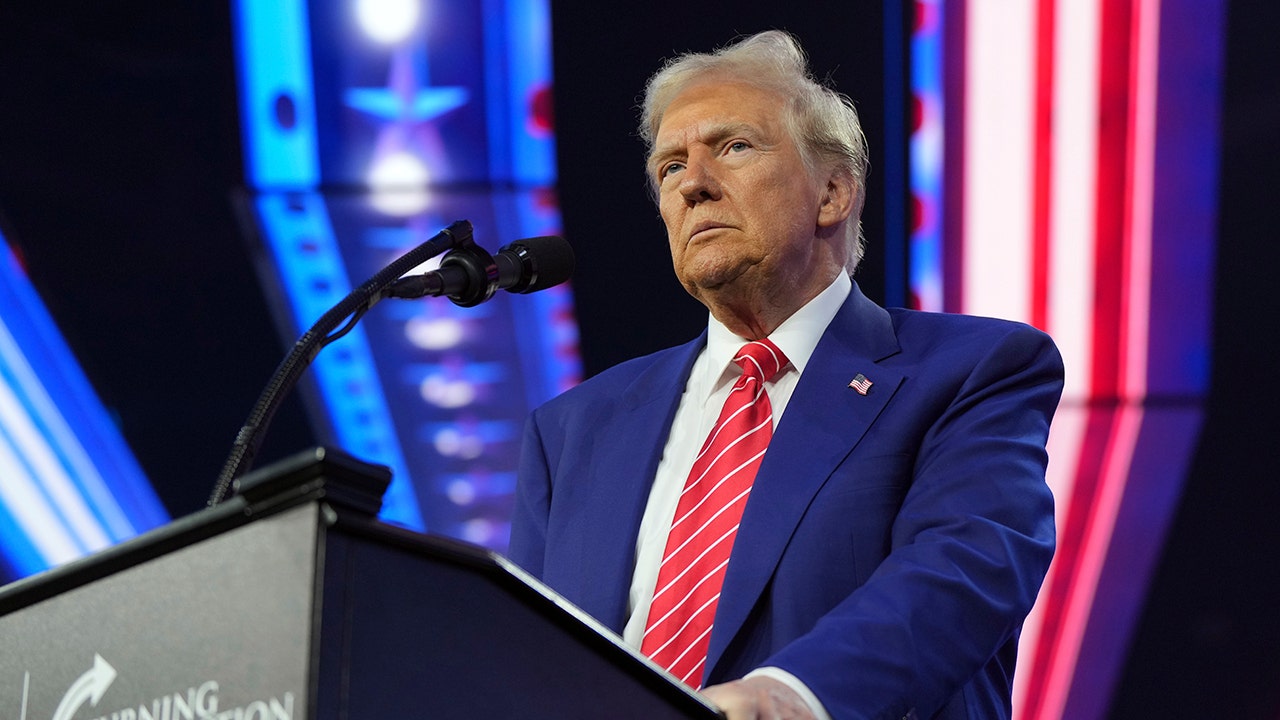Politics
Federal courts will not make criminal referrals to DOJ over separate ethics complaints against Justice Thomas
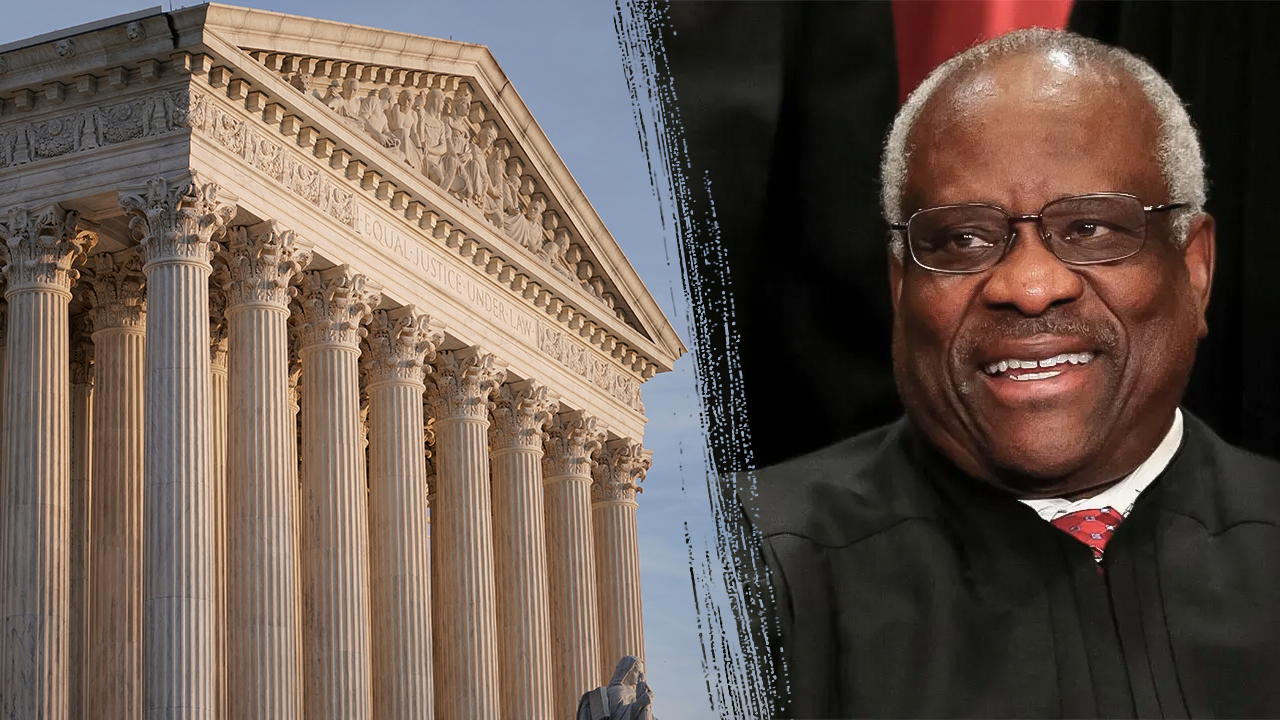
Separate ethics complaints filed by members of Congress and an advocacy group against Justices Clarence Thomas and Ketanji Brown Jackson will not be referred to the Justice Department, federal court officials announced.
The U.S. Judicial Conference said Thomas has agreed to follow updated guidelines on listing free private travel and gifts from friends, following previous reporting on undisclosed hospitality.
For her part, Jackson has amended her financial disclosures following complaints about her husband’s consulting income as a physician.
Democratic Sens. Sheldon Whitehouse (D-RI) and Ron Wyden (D-OR), along with Rep. Hank Johnson (D-GA), had asked for an investigation by the judiciary itself into undisclosed hospitality provided to Thomas by billionaire friend Harland Crow. ProPublica reported on several instances of private travel and lodging over the years.
SUPREME COURT CHEIF JUSTICE ROBERTS ISSUES WARNING ON ‘JUDICIAL INDEPENDENCE’ WEEKS BEFORE TRUMP’S INAUGURATION
Judge Robert Conrad, who heads the judicial conference policymaking body, said in letters to the lawmakers that Thomas had filed amended financial disclosures “that address several issues identified in your letter.”
Additionally, Conrad said that it was not clear whether the judiciary itself could make criminal referrals against a sitting Supreme Court member.
“Because the Judicial Conference does not superintend the Supreme Court and because any effort to grant the Conference such authority would raise serious constitutional questions, one would expect Congress at a minimum to state any such directive clearly. But no such express directive appears in this provision,” Conrad said.
DEPARTMENT OF JUSTICE SPENT OVER $100 MILLION ON DEI EDUCATION PROGRAMS OVER LAST FOUR YEARS
The U.S. Supreme Court is seen during sunset. (Aaron Schwartz/SIPA USA)
Conrad noted that Whitehouse and Wyden had separately asked Attorney General Merrick Garland to name a special counsel to investigate then-former President Donald Trump. Garland has not acted yet on that request.
Whitehouse, in a statement, criticized the Judicial Conference’s decision.
“By all appearances, the judicial branch is shirking its statutory duty to hold a Supreme Court justice accountable for ethics violations,” said Whitehouse.
The complaint filed against Jackson came from Citizens for Renewing America, led by Russ Vought, who was nominated by President-elect Trump to lead the Office of Management and Budget.
Questions over ethics, including unreported private travel by some justices, have led the court to adopt its first code of ethics last year.

United States Supreme Court (front row L-R) Associate Justice Sonia Sotomayor, Associate Justice Clarence Thomas, Chief Justice of the United States John Roberts, Associate Justice Samuel Alito, and Associate Justice Elena Kagan, (back row L-R) Associate Justice Amy Coney Barrett, Associate Justice Neil Gorsuch, Associate Justice Brett Kavanaugh and Associate Justice Ketanji Brown Jackson pose for their official portrait at the East Conference Room of the Supreme Court building on October 7, 2022 in Washington, DC. The Supreme Court has begun a new term after Associate Justice Ketanji Brown Jackson was officially added to the bench in September. ((Photo by Alex Wong/Getty Images))
However, compliance is left to each of the nine justices, leading to concerns the court is not taking its own ethics enforcement standards seriously.
A two-year investigation by Senate Democrats released last week found additional luxury travel by Justice Thomas in 2021 was not noted on his annual financial disclosure form.
Fix the Court, a group which advocates for greater judicial transparency, urged Congress to act.
“The Conference’s letters further underscore the need for Congress to create a new and transparent mechanism to investigate the justices for ethics violations since the Conference is unwilling to act upon the one method we had presumed existed to do that,” said Executive Director Gabe Roth.

Politics
Who is Giorgia Meloni? Trump hosts Italian PM at Mar-a-Lago

President-elect Trump is playing host to Italian Prime Minister Giorgia Meloni at Mar-a-Lago this weekend, suggesting he plans to develop a warmer relationship with one of his closest ideological allies in Europe.
Trump praised Meloni, 47, for having “taken Europe by storm” during a dinner Saturday night. Meloni was elected in 2022 after running on a conservative pro-family and anti-immigration agenda, panned as “far-right” by many in the media.
Meloni is the first female Italian prime minister, and she has served as leader of the Brothers of Italy party since 2014. Both she and her party surged in popularity thanks to backlash against how the Italian government handled the COVID-19 pandemic.
Meloni’s coalition government is likely the closest ideological ally Trump has within the European Union. Meloni has also developed a close relationship with top Trump ally Elon Musk, who has frequented Mar-a-Lago since Election Day.
CONGO BEGINS EXPORTING LIQUIFIED NATURAL GAS UNDER ITALIAN FIRM’S INITIATIVE
Italian Prime Minister Giorgia Meloni addresses the media after meeting Ukraine’s President Volodymyr Zelenskyy at Villa Doria Pamphilj in Rome on Oct. 10, 2024. (Massimo Valicchia/NurPhoto via Getty Images)
Similar to the U.S., Italy faces a major illegal immigration problem with migrants crossing the Mediterranean Sea to their shores. Meloni’s “return hubs” policy ensures that migrants are not released into Italy during their asylum process, a program she says has become a “model” for Europe.
“It is a new, courageous, unprecedented path, but one that perfectly reflects the European spirit,” she said of the program in October.
Meloni has also proven to go against the grain on social issues, moving last year to limit parental rights for same-sex couples. The policy ensures that only the biological parent of a child within a same-sex marriage enjoys full parental rights.
FRENCH FAR RIGHT SEEKS ALLIANCE WITH CONSERVATIVES AFTER STUNNING EU PARLIAMENT WINS

Elon Musk speaks at the Atreju political convention organized by Fratelli d’Italia (Brothers of Italy), on Dec. 15, 2023, in Rome. Prime Minister Giorgia Meloni’s right-wing political party organized a four-day political festival in the Italian capital. (Antonio Masiello/Getty Images)
Meloni’s coalition government has also proven uncommonly stable compared to Italy’s recent history. She has avoided in-fighting within her party and opposition leaders have failed to coalesce around any candidate to effectively challenge her.
ITALIAN PM MELONI ALLY FIRES BACK AGAINST CRITICISM SAYS POLICIES THE SAME BUT ‘EUROPE HAS CHANGED’
All this places Meloni in a natural position to serve as a go-between for the Trump administration and the European Union over the next four years.

Giorgia Meloni appeared unannounced at Trump’s residence in Mar-a-Lago this weekend. (Kevin Dietsch/Getty Images)
Sen. Marco Rubio, R-Fla., Trump’s nominee for secretary of state, was also in attendance when Meloni visited Trump’s Florida residence this weekend.
President Biden is set to travel later this week to Rome to meet with Meloni and then Pope Francis. The White House said Biden’s meeting with Meloni will “highlight the strength of the U.S.-Italy relationship” and will include the president thanking the prime minister “for her strong leadership of the G7 over the past year.”
Politics
Opinion: Don't forget what happened four years ago on Jan. 6

Four years ago on Jan. 6, not even most Republicans would have imagined this 2025 anniversary: The West Front of the Capitol — where rioters battled outnumbered police to breach the building, marauding and hunting for lawmakers — is currently getting gussied up for this month’s inauguration of the 2021 mob’s inciter: Donald Trump.
“All I can say is count me out, enough is enough,” South Carolina Sen. Lindsey Graham famously harrumphed in the Senate back then. He was one of many Republicans who condemned Trump for the attack after it was put down and members of Congress — along with the day’s chief target, Trump’s Vice President Mike Pence — could safely return to certify the 2020 election of Joe Biden.
Opinion Columnist
Jackie Calmes
Jackie Calmes brings a critical eye to the national political scene. She has decades of experience covering the White House and Congress.
Within a month, those same Republicans, cowed by Trump’s fanatically loyal voters, ate their words and returned to his fold — and, in shape-shifter Graham’s case, to his golf courses.
Ever since, the Republican Party has either downplayed the violence of Jan. 6 or, like Trump, denied that it was anything more than “great patriots” exercising their 1st Amendment rights or making “a normal tourist visit” to the Capitol, though we all watched an insurrection in real time and in countless video replays. They’ve condemned Americans to be bit players in a Marx Brothers comedy: “Who you gonna believe, me or your own eyes?” But this charade isn’t funny.
Let’s mark this anniversary by recalling some facts about what happened that day and afterward, in the run-up to President Biden’s inauguration. And by calling the gaslighting, the lying, just what it is.
Lies like this: On Tuesday, Republican Rep. Eric Burlison of Missouri told the right-wing Newsmax that those criminally charged after Jan. 6 — nearly 1,600 people, including almost 1,000 who’ve pleaded guilty, according to a Justice Department update — were entrapped by the FBI “to do things that they didn’t even know might be illegal.”
Who doesn’t know that assaulting police with iron pipes, tasers, pepper spray, bats and flagpoles, injuring more than 140 of them, contributing to the deaths of several, and doing millions of dollars of damage to federal property is illegal? And how does a political party that professes to support law enforcement come to make these absurdist arguments?
Blind fealty to, or fear of, the incoming president is how.
But the voters have spoken, and a narrow plurality chose Trump, the Jan. 6 instigator, to become president in two weeks. And his “day one” promises include pardoning those he calls “the J-6 hostages.”
“Those people have suffered long and hard,” the usually unempathetic president-elect said on NBC’s “Meet the Press” last month. Trump first excused those who’d assaulted police — “They had no choice” — and then suggested the police actually invited the rioters into the Capitol: “You had the police saying, ‘Come on in. Come on in.’ ” (Now you know where the likes of Burlison get their nonsense.)
According to Trump, it’s the Democrats and Republicans who were on the House Jan. 6 investigatory committee — “political thugs” and “creeps” — who should be in jail. This from the former and future commander in chief who, the committee found, sat in the White House for three hours that day — “187 minutes of dereliction” — watching the mayhem on TV and drinking Diet Coke as aides, family, friends and Fox News hosts implored him to do something, say something, to stop it.
As the Jan. 6 committee’s final report concluded: “There’s no question that President Trump had the power to end the insurrection. He was not only the Commander-in-Chief of the U.S. military, but also of the rioters.”
Biden delivered his answer to Trump’s perverse judgment this week: He awarded the nation’s second-highest civilian honor to Rep. Bennie Thompson of Mississippi and former Rep. Liz Cheney of Wyoming, the Democratic chair and Republican vice chair of the Jan. 6 committee — Cheney for “putting the American people over party” and Thompson for “dedication to safeguarding our Constitution.” But Trump’s pliant Justice Department could get the last word, alas.
In the meantime, Biden is providing the “smooth transition” that sore-loser Trump denied him after the 2020 election. “Welcome back,” the president told Trump a week after the 2024 election at the traditional White House meeting of incoming and outgoing presidents, another norm Trump scorned in 2020 as he contested his loss in a free and fair election.
Back then, the post-Jan. 6 preparations for Biden’s inauguration had a wartime feel amid fears of a repeat attempt to prevent his taking office. Among the security measures were 7-foot fencing topped with razor wire around the Capitol, concrete barriers, boarded-up windows, barricaded roads and closed subway stations, military vehicles and 25,000 National Guard troops on the streets, with thousands more police from around the nation deputized to help.
On Inauguration Day 2021, Trump was not on the platform — one of the few presidents in U.S. history to willfully refuse to attend his successor’s swearing-in — but Pence was. On this Jan. 20, Trump will be there, of course, with Biden and Vice President Kamala Harris looking on as he’s sworn in. Pence will be absent, repudiated in favor of a vice presidential pick, JD Vance, more likely than Pence proved to be to put Trump above the Constitution.
Four years ago, given the security threat and still-spreading pandemic, Biden spoke to an empty expanse; a “field of flags” stood in for crowds on the National Mall. “We learned again that democracy is precious, democracy is fragile,” the new president said. But, he added, “At this hour, my friends, it has prevailed.”
Democracy will prevail again on this Jan. 20. To the benefit of, but no thanks to, Donald Trump.
@jackiekcalmes
Politics
‘A Day of Love’: How Trump Inverted the Violent History of Jan. 6

In two weeks, Donald J. Trump is to emerge from an arched portal of the United States Capitol to once again take the presidential oath of office. As the Inauguration Day ritual conveying the peaceful transfer of power unfolds, he will stand where the worst of the mayhem of Jan. 6, 2021, took place, largely in his name.
Directly behind Mr. Trump will be the metal-and-glass doors where protesters, inflamed by his lie that the 2020 election had been stolen from him, stormed the Capitol with clubs, chemical irritants and other weapons. To his left, the spot where roaring rioters and outnumbered police officers fought hand to hand. To his right, where the prostrate body of a dying woman was jostled in the bloody fray.
And before him, a dozen marble steps descending to a lectern adorned with the presidential seal. The same steps where, four years earlier, Trump flags were waved above the frenzied crowd and wielded like spears; where an officer was dragged facedown to be beaten with an American flag on a pole and another was pulled into the scrum to be kicked and stomped.
In the wake of the attack on the Capitol, Mr. Trump’s volatile political career seemed over, his incendiary words before the riot rattling the leaders of his own Republican Party. Myriad factors explain his stunning resurrection, but not least of them is how effectively he and his loyalists have laundered the history of Jan. 6, turning a political nightmare into a political asset.
What began as a strained attempt to absolve Mr. Trump of responsibility for Jan. 6 gradually took hold, as his allies in Congress and the media played down the attack and redirected blame to left-wing plants, Democrats and even the government. Violent rioters — prosecuted, convicted and imprisoned — somehow became patriotic martyrs.
This inverted interpretation defied what the country had watched unfold, but it neatly fit the persecution narrative that binds Mr. Trump to many of his faithful. Once he committed to running again for president, he doubled down on flipping the script about the riot and its blowback, including a congressional inquiry and two criminal indictments against him, as part of an orchestrated victimization.
That day was an American calamity. Lawmakers huddled for safety. Vice President Mike Pence eluded a mob shouting that he should be hanged. Several people died during and after the riot, including one protester by gunshot and four police officers by suicide, and more than 140 officers were injured in a protracted melee that nearly upended what should have been the routine certification of the electoral victory of Mr. Trump’s opponent, Joseph R. Biden Jr.
But with his return to office, Mr. Trump now has the platform to further rinse and spin the Capitol attack into what he has called “a day of love.” He has vowed to pardon rioters in the first hour of his new administration, while his congressional supporters are pushing for criminal charges against those who investigated his actions on that chaotic day.
When asked about the reframing of the Capitol riot, and whether Mr. Trump accepts any responsibility for what unfolded on Jan. 6, his spokeswoman, Karoline Leavitt, instead referred in a statement to the “political losers” who tried to derail his career and asserted that “the mainstream media still refuses to report the truth about what happened that day.” She added, “The American people did not fall for the Left’s fear mongering over January 6th.”
The Jan. 6 tale that Mr. Trump tells is its own kind of replacement theory, one that covers over the marble-hard facts the way a blue carpet will cover those tainted Capitol steps on Inauguration Day.
The Seeds of Suspicion
What happened and why seemed beyond debate.
Hundreds of thousands of tips. Tens of thousands of hours of video footage. Thousands of seized cellphones. The attack on the Capitol was, after all, the largest digital crime scene in history, the total estimated cost of its aftermath exceeding $2.7 billion.
The Justice Department has experienced some setbacks in its criminal prosecutions — including a Supreme Court ruling that it overreached in using a controversial obstruction statute — but its success rate has been overwhelming. More than half of the nearly 1,600 defendants have pleaded guilty, while 200 more have been convicted after trial, resulting in sentences ranging from a few days in jail for misdemeanor trespassing to 22 years in prison for seditious conspiracy.
The story told by many of the indictments begins with a mixed-message speech delivered before the riot by Mr. Trump in a park near the White House. After falsely claiming that the 2020 election had been stolen, he encouraged people to march “peacefully and patriotically” to the Capitol, but reminded them that “we fight like hell.”
Mr. Trump retired to the White House, where he watched the televised violence and ignored advice to tell the mob to leave. Then, after sending two tweets calling for peaceful protest, he posted a video repeating his rigged-election falsehood and saying: “We have to have peace. So go home. We love you. You’re very special.”
A follow-up tweet ended: “Remember this day forever!”
Condemnation came swiftly. As shaken Republican leaders denounced him and Democrats moved to impeach him for “incitement of insurrection,” a seemingly chastened Mr. Trump called the riot “a heinous attack on the United States Capitol.” In those early days, he referred to Jan. 6 as “the calamity at the Capitol” and warned that lawbreakers “will pay.”
The outgoing president called for national unity but declined to attend his successor’s inauguration. The Republican-controlled Senate acquitted him of incitement, but its leader, Mitch McConnell, declared him “practically and morally responsible for provoking the events of the day” — a sentiment apparently shared by most Americans, with nearly 60 percent saying in polls that he should never hold office again.
But sand was already being thrown in the eyes of history.
Before the Capitol had even been secured, Representative Paul Gosar, Republican of Arizona, was asserting on Twitter that the events had “all the hallmarks of Antifa provocation.” Hours later, the Fox News commentator Laura Ingraham was telling viewers that “there are some reports that antifa sympathizers may have been sprinkled throughout the crowd.” And by morning, Representative Matt Gaetz, Republican of Florida, was claiming on the House floor that some rioters “were masquerading as Trump supporters and in fact were members of the violent terrorist group antifa.” (Mr. Gaetz would become President-elect Trump’s first choice for attorney general before being derailed by scandal.)
According to M.I.T. Technology Review, this fabrication was repeated online more than 400,000 times in the 24 hours after the Capitol attack, amplified by a cast of MAGA influencers, Republican officials and members of Mr. Trump’s family.
The former president remained mostly silent in the weeks that followed. But in a late March interview with Washington Post reporters that was not made public until months later, he provided an early hint of how he would frame the Jan. 6 attack.
The day he had previously called calamitous was now largely peaceful. The mob that stormed the Capitol had been “ushered in” by the police. And those who had rallied with him beforehand were a “loving crowd.”
A Deep-State Conspiracy Theory
Through the spring and summer of 2021, Mr. Trump’s Republican allies sought to sow doubt and blame others. It was as if Mr. McConnell, among other leading Republicans, had never publicly declared Mr. Trump responsible. As if the world had not seen what it had seen.
In early May, on the same day House Republicans stripped Representative Liz Cheney of Wyoming of her leadership role for labeling Mr. Trump a threat to democracy, they used an Oversight Committee hearing to minimize the riot. Representative Ralph Norman of South Carolina questioned whether all those rioters wearing Trump gear and shouting pro-Trump chants were truly Trump supporters, while Representative Andrew Clyde of Georgia likened much of the trespassing to a “normal tourist visit.”
This benign interpretation of Jan. 6 gave way to a much more startling theory, posed in mid-June by the Fox News host Tucker Carlson, at the time perhaps the most-watched commentator in cable news: The riot had been a false-flag operation orchestrated by the Federal Bureau of Investigation.
Mr. Gaetz and another Republican loyalist, Representative Marjorie Taylor Greene of Georgia, quickly seconded the deep-state conspiracy theory, while Mr. Gosar entered the article on which it was based — written by Darren Beattie, a former Trump speechwriter who had been fired for speaking at a conference beside white supremacists — into the Congressional Record.
Soon after, Mr. Trump broke his monthslong silence about Jan. 6. At an early July rally in Sarasota, Fla., he invoked the name of Ashli Babbitt, a pro-Trump rioter who had been fatally shot by a Capitol police officer while trying to breach the House floor, where lawmakers and staff members had sought safety. She was fast becoming a martyr to the cause.
“Shot, boom,” Mr. Trump said. “There was no reason for it. Who shot Ashli Babbitt?”
The former president also referred to the jailed rioters. Floating the specter of a justice system prejudiced against conservatives, he questioned why “so many people are still in jail over Jan. 6” when antifa and Black Lives Matter hadn’t paid a price for the violent protests that followed the murder of a Black man, George Floyd, by a white Minneapolis police officer in 2020.
The fog machine of conspiracy was turned up a few notches that fall, when the Fox Nation streaming service released “Patriot Purge,” a three-part series in which Mr. Carlson expanded on his specious contention that the Capitol attack was a government plot to discredit Mr. Trump and persecute conservatives.
The widely denounced claim was deemed so outrageous that two Fox News contributors, Jonah Goldberg and Stephen Hayes, resigned in protest. In a scathing blog post, they wrote that the program was a hodgepodge of “factual inaccuracies, half-truths, deceptive imagery and damning omissions.”
Mr. Carlson’s documentary, they wrote, “creates an alternative history of January 6, contradicted not just by common sense, not just by the testimony and on-the-record statements of many participants, but by the reporting of the news division of Fox News itself.”
Martyrs and Vigils
Amid the conspiratorial swirl of antifa agitators and deep-state plots, a related narrative was gaining traction: the glorification of those who had attacked the Capitol. Instead of marauders, vandals and aggressors, they were now political prisoners, hostages, martyrs. Patriots.
This movement’s energy radiated from a troubled detention center in Washington where a few dozen men charged with attacking police officers and committing other violent offenses were held. A defiant esprit de corps developed among them in the so-called Patriot Wing, where inmates in prison-issue orange gathered every night to sing the national anthem.
Outside the razor-wire walls, their supporters kept vigil in a spot dubbed the “Freedom Corner.” Led by Ms. Babbitt’s mother, among others, they set out snacks, flew American flags and live-streamed phone conversations with inmates.
Sympathy that might have been reserved for the injured police officers was directed instead to those who had assaulted them. And Mr. Trump — whose Jan. 6 actions were now being investigated by the Justice Department and a bipartisan House select committee — emerged in 2022 as their No. 1 sympathizer.
At a mid-January rally in Florence, Ariz., he described the Jan. 6 defendants as persecuted political prisoners. Later that month, in Conroe, Texas, he promised that if he was re-elected, and if pardons were required, “we will give them pardons because they are being treated so unfairly.”
Mr. Trump’s counteroffensive began taking shape. The House select committee, whose members included Ms. Cheney, became in his words the “unselect committee” and the prevailing narrative of Jan. 6 as an insurrection “a lot of crap.”
One of his most repeated contentions was that the Democratic House speaker, Nancy Pelosi, had rejected his recommendation to have 10,000 soldiers present on Jan. 6. But subsequent investigations demonstrated that it was his own military advisers, and not Ms. Pelosi, who blocked the idea, concerned with both the optics of armed soldiers at a political protest and the possibility that Mr. Trump might invoke the Insurrection Act to place the troops under his direct command.
“There is absolutely no way I was putting U.S. military forces at the Capitol,” the acting defense secretary, Christopher Miller, later told investigators. Doing so, he said, could have created “the greatest constitutional crisis probably since the Civil War.”
As the select committee began holding hearings in early June 2022, Mr. Trump used speeches and his social media platform, Truth Social, to clap back at the damaging evidence and testimony. One post read: “The so-called ‘Rush on the Capitol’ was not caused by me, it was caused by a Rigged and Stolen Election!”
In a speech in Nashville that month, he dismissed the riot as a “simple protest” that “got out of hand,” again floated the possibility of pardons and furthered the false-flag theory by mentioning Ray Epps, a protester falsely portrayed by Mr. Carlson on Fox News and Republicans in Congress as a government plant who had stage-managed the riot.
His efforts seemed to be working. By mid-2022, an NBC News poll found that fewer than half of Americans still considered Mr. Trump “solely” or “mainly” responsible for Jan. 6.
For some supporters, though, Mr. Trump was not doing enough. In the late summer, he agreed to meet two advocates for the Jan. 6 defendants at his golf club in Bedminster, N.J.: Julie Kelly, a conservative journalist who had written skeptically about the Capitol attack, and Cynthia Hughes, a founder of the Patriot Freedom Project, which supported the inmates’ families. Ms. Hughes was also an aunt of Timothy Hale-Cusanelli, a professed Hitler fanboy who had spent time in the Patriot Wing.
They told Mr. Trump that the defendants and their families felt abandoned by him, Ms. Kelly later recalled, and that some of the federal judges in Washington he had appointed were among the worst in their handling of Jan. 6 cases.
These jurists had earned the ire of people like Ms. Kelly by repeatedly rejecting arguments that the defendants could not get fair trials in liberal Washington or had been unduly prosecuted for their pro-Trump politics. The judges also knocked down the contention that nonviolent rioters should not have been charged at all, ruling that everyone in the mob, “no matter how modestly behaved,” contributed to the chaos at the Capitol.
After his meeting with the women, Mr. Trump donated $10,000 to Ms. Hughes’s organization and told a conservative radio host that if he was elected, there would be full pardons and “an apology to many.” Days later, Ms. Hughes was given a speaking role at a Trump rally in Wilkes-Barre, Pa.
Ms. Hughes’s Patriot Freedom Project closed out 2022 with a fund-raising holiday party at the Capitol Hill Hilton, in sight of the riot scene. Children received gifts, inmates spoke to the crowd from jail and tearful family members shared their hardships. There was also a surprise video message of encouragement from Mr. Trump, who had recently announced his candidacy.
Then, just before Christmas, the House select committee released its final report, based largely on testimony from those inside Mr. Trump’s orbit. It accused him of repeatedly lying about a stolen election and summoning the angry mob that thwarted a peaceful transition between administrations.
In the report’s foreword, Ms. Cheney recalled how her great-great-grandfather answered Abraham Lincoln’s call to defend the union by joining the 21st Ohio Volunteer Infantry. He fought for four years, she wrote, for the same essential principle the committee was empaneled to protect: the peaceful transfer of power.
The Candidate and the Prison Choir
Perhaps the moment when Mr. Trump and his allies fully embraced their alternate version of history came on March 3, 2023, when a new song appeared on major streaming platforms.
The song, “Justice for All,” featured Mr. Trump reciting the Pledge of Allegiance while the men of the Patriot Wing, now billing themselves as the J6 Prison Choir, sang the national anthem. In other words, it was a collaboration between a man seeking the Republican presidential nomination and about 20 men charged with attacking the nerve center of the republic.
Mr. Trump recorded his contribution at his Mar-a-Lago residence in Florida, while the choir was recorded with a phone in the Washington jail. The song — a fund-raising effort that the Trump loyalist Kash Patel, now the president-elect’s nominee to head the F.B.I., helped produce — concludes with a defiant echo of the “U.S.A.!” chants that resounded during the Jan. 6 attack.
The first Trump campaign rally for the 2024 election took place three weeks later, in Waco, Texas, where a deadly standoff between federal agents and a religious cult in 1993 became a far-right touchstone. Before launching into complaints about persecution and promises of retribution, the candidate placed his hand over his heart for the playing of what an announcer called “the No. 1 song” on iTunes and Amazon, featuring Mr. Trump “and the J6 Choir.”
Mr. Trump’s version of the attack on the Capitol had firmly taken hold, at least within his party. A YouGov poll at the time found that most Republicans believed the events of Jan. 6 reflected “legitimate political discourse.”
In August 2023, Mr. Trump was indicted twice on charges of interfering with the 2020 election results: at the state level, for illegally seeking to overturn the results of the election in Georgia, which he had narrowly lost; and at the federal level, for conspiring to impede the Jan. 6 certification of Mr. Biden’s election.
A subsequent court filing by Jack Smith, the special counsel leading the federal investigation, cited Mr. Trump’s steadfast endorsement of the rioters and of the prison choir, “many of whose criminal history and/or crimes on January 6 were so violent that their pretrial release would pose a danger to the public.” The former president, it continued, “has financially supported and celebrated these offenders — many of whom assaulted law enforcement on January 6 — by promoting and playing their recording of the national anthem at political rallies and calling them ‘hostages.’”
All true. Still, Mr. Trump continued to play “Justice for All” at rallies and at Mar-a-Lago, spread his rigged-election lie, drop intimations of false-flag conspiracies, refer to those who stormed the Capitol as patriots — and, now, transformed the indictments into further fuel for his persecution narrative.
In so many ways, Jan. 6 had become part of his brand — a brand in which an attack on the symbol of American democracy became a defense of that same democracy: a blow against political thugs and closet communists, deep-state plots and an unjust justice system.
A part of the brand that, in November, helped Mr. Trump win election as the 47th president of the United States.
Promising Pardons — and Payback
Once he takes office, Mr. Trump will be positioned to finish refashioning Jan. 6 as a modern Lost Cause of the Confederacy.
With the help of Republican loyalists, the Senate acquitted him of incitement at his impeachment trial. The Supreme Court he had helped mold rejected an attempt to keep him off the ballot under a constitutional ban against insurrectionists from holding office. And his legal maneuvering — to delay, delay, delay — succeeded: In the days after the election, Mr. Smith, the special counsel, dropped his election-subversion case, adhering to a Justice Department policy not to prosecute a sitting president.
An emboldened Mr. Trump has already indicated that his presidential agenda will include payback for those who declared him responsible for the Capitol attack. He has said that Mr. Smith “should be thrown out of the country,” and that Ms. Cheney and other leaders of the House select committee — “one of the greatest political scams in history,” his spokeswoman, Ms. Leavitt, said — should “go to jail,” without providing evidence to warrant such extreme measures.
At the same time, Mr. Trump’s repeated vows to pardon those implicated in the Capitol riot, an act of erasure that would validate their claims of political persecution, has electrified the Jan. 6 community of families, defendants and felons. On election night, those keeping vigil outside the Washington jail celebrated with champagne.
Even though Mr. Trump has not specified whom he would pardon, many Jan. 6 participants are anticipating a general amnesty for everyone involved. One defendant, charged with attacking police officers with a baseball bat, even promoted an A.I. video of inmates in orange jumpsuits parading triumphantly out of jailhouse doors.
Many defendants have requested delays in their court proceedings because, they say, the imminent pardons will render their cases moot. Among those employing this argument was Philip Sean Grillo, convicted of several misdemeanors after entering the Capitol through a broken window and later boasting in a recording that “we stormed the Capitol. We shut it down! We did it!”
But to Mr. Grillo’s misfortune, the federal judge handling his case was Royce C. Lamberth, 81, a no-nonsense former prosecutor who had been appointed by President Ronald Reagan in 1987. Judge Lamberth not only rejected Mr. Grillo’s request for a delay, he filed a court document to “clear the air” and “remind ourselves what really happened.”
With clinical precision, the judge recalled how an angry mob invaded and occupied the Capitol with intentions to “thwart the peaceful transfer of power that is the centerpiece of our Constitution and the cornerstone of our republican legacy”; how they ignored directives to turn back and desist; how some engaged in “pitched battle” with the police, “stampeding through and over the officers.”
“They told the world that the election was stolen, a claim for which no evidence has ever emerged,” the judge wrote. “They told the world that they were there to put a stop to the transfer of power, even if that meant ransacking, emptying, and desecrating our country’s most hallowed sites. Most disturbingly, they told the world that particular elected officials who were present at the Capitol that day had to be removed, hurt, or even killed.”
The country came “perilously close” to letting the orderly transfer of power slip away, Judge Lamberth wrote. He knew this, he said, because he and his colleagues had presided over hundreds of trials, read hundreds of guilty pleas, heard from hundreds of law enforcement witnesses — “and viewed thousands of hours of video footage attesting to the bedlam.”
With that, Judge Lamberth ordered Mr. Grillo to be taken immediately into custody to begin a sentence of one year in prison.
As he was being handcuffed, the Jan. 6 rioter taunted the veteran judge by saying it didn’t matter: He would be pardoned anyway — by a man who will soon benefit from the peaceful transfer of power while standing on a blue carpet covering an old crime scene.
Dylan Freedman contributed reporting.
-

 Health1 week ago
Health1 week agoNew Year life lessons from country star: 'Never forget where you came from'
-
/cdn.vox-cdn.com/uploads/chorus_asset/file/24982514/Quest_3_dock.jpg)
/cdn.vox-cdn.com/uploads/chorus_asset/file/24982514/Quest_3_dock.jpg) Technology1 week ago
Technology1 week agoMeta’s ‘software update issue’ has been breaking Quest headsets for weeks
-

 Business4 days ago
Business4 days agoThese are the top 7 issues facing the struggling restaurant industry in 2025
-

 Politics1 week ago
Politics1 week ago'Politics is bad for business.' Why Disney's Bob Iger is trying to avoid hot buttons
-

 Culture4 days ago
Culture4 days agoThe 25 worst losses in college football history, including Baylor’s 2024 entry at Colorado
-

 Sports4 days ago
Sports4 days agoThe top out-of-contract players available as free transfers: Kimmich, De Bruyne, Van Dijk…
-

 Politics3 days ago
Politics3 days agoNew Orleans attacker had 'remote detonator' for explosives in French Quarter, Biden says
-

 Politics2 days ago
Politics2 days agoCarter's judicial picks reshaped the federal bench across the country
/cdn.vox-cdn.com/uploads/chorus_asset/file/25803704/PayPal_Honey_Logo.png)
